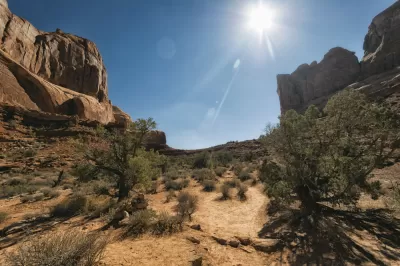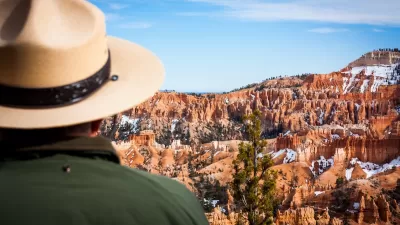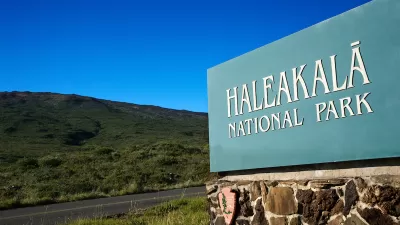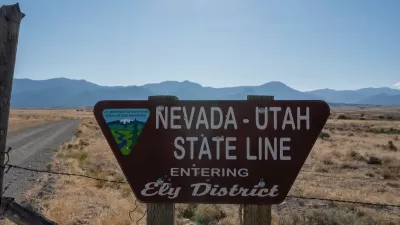The Natural Resources Management Act enjoyed bipartisan support in both houses of Congress. But it left out contentious issues like wildfires, greenhouse gas emissions, and protecting wildlife corridors.

The largest public lands protection bill since 2009, the Natural Resources Management Act adds over 1.3 million acres of wilderness and creates four new national monuments, writes Carl Segerstrom. The bill also protects 367 miles of rivers and permanently reauthorizes the Land and Water Conservation Fund. It's on its way to President Trump after passage in the Senate and the House.
While it's a comforting example of bipartisanship, Segerstrom points out that the bill punts on the more controversial aspects of "updating public-lands laws for the 21st century." He goes on, "Rather than address the overarching issues facing public-lands management, such as wildfires, greenhouse gas emissions and protecting wildlife corridors for endangered species, the new lands bill is [pork barrel politics]."
Substantive environmental policymaking, meanwhile, isn't something the current Congress seems capable of, Segerstrom says. "Bedrock environmental laws that drive public-land policy, such as the Wilderness Act, Endangered Species Act, National Environmental Policy Act and Federal Land Policy and Management Act, were all signed during or before 1976." Without Congressional leadership, policy on public lands tends to volley back and forth depending on who's in the White House. Amid the bill's 700 pages, Segerstrom notes, the word "climate" does not appear.
FULL STORY: New bill leaves lands protected, lawmaking neglected

Alabama: Trump Terminates Settlements for Black Communities Harmed By Raw Sewage
Trump deemed the landmark civil rights agreement “illegal DEI and environmental justice policy.”

Study: Maui’s Plan to Convert Vacation Rentals to Long-Term Housing Could Cause Nearly $1 Billion Economic Loss
The plan would reduce visitor accommodation by 25% resulting in 1,900 jobs lost.

Why Should We Subsidize Public Transportation?
Many public transit agencies face financial stress due to rising costs, declining fare revenue, and declining subsidies. Transit advocates must provide a strong business case for increasing public transit funding.

Paris Bike Boom Leads to Steep Drop in Air Pollution
The French city’s air quality has improved dramatically in the past 20 years, coinciding with a growth in cycling.

Why Housing Costs More to Build in California Than in Texas
Hard costs like labor and materials combined with ‘soft’ costs such as permitting make building in the San Francisco Bay Area almost three times as costly as in Texas cities.

San Diego County Sees a Rise in Urban Coyotes
San Diego County experiences a rise in urban coyotes, as sightings become prevalent throughout its urban neighbourhoods and surrounding areas.
Urban Design for Planners 1: Software Tools
This six-course series explores essential urban design concepts using open source software and equips planners with the tools they need to participate fully in the urban design process.
Planning for Universal Design
Learn the tools for implementing Universal Design in planning regulations.
Smith Gee Studio
Alamo Area Metropolitan Planning Organization
City of Santa Clarita
Institute for Housing and Urban Development Studies (IHS)
City of Grandview
Harvard GSD Executive Education
Toledo-Lucas County Plan Commissions
Salt Lake City
NYU Wagner Graduate School of Public Service





























